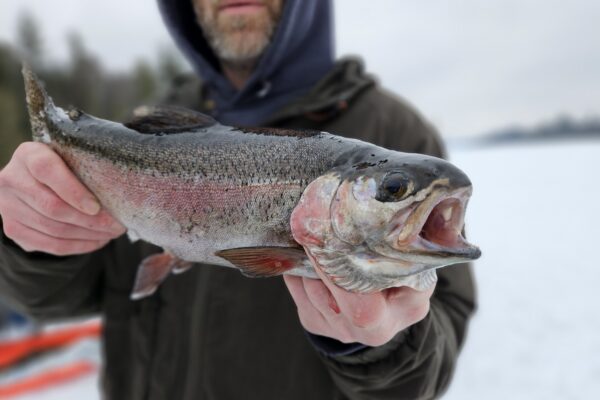Spring raptor migration off to a slow start in northern Minnesota
After a gloomy, icy start to the spring season in northern Minnesota, it appears that winter is officially fading from the Northland—much to the relief of many residents and migrating raptor species.
The delayed spring conditions have put a damper on the raptor migration season across much of the region. “The weather has definitely played a role in slowing things down this spring,” Margie Menzies, the education director at Hawk Ridge Bird Observatory in Duluth, said. “Everything’s behind.”
Bald Eagles are generally the first raptor species to return to northern Minnesota in February and early March to kick off the spring migration season. On average, Hawk Ridge experiences a peak high count of Bald Eagles between March 17-23, where 400 to 500 Bald Eagles are recorded each day. “Most of the time, they’re in that window,” Menzies said. “And we certainly haven’t hit that yet.”
However, Menzies said with each day that passes, Hawk Ridge is recording more migrating Bald Eagles. As of April 6, the total count for the species was 2522. The Hawk Ridge raptor count starts on March 1 and continues daily through May 31.
While the total count is behind for early April, Menzies assures that the 2023 spring migration is still better than the worst recorded season at Hawk Ridge.
Following the return of Bald Eagles, the next raptors to arrive in the northern Minnesota region are Red-tailed Hawks, Rough-legged Hawks, and Golden Eagles. “These are birds coming from boreal forest and the tundra further north,” Menzies said. “We’re way behind on the count for those guys so far this year.”
The northern Minnesota landscape, particularly surrounding the shores of Lake Superior, is considered an avian superhighway. Raptors, waterfowl, songbirds, and many others migrate through the area along the North America Mississippi Flyway.
“We know from research and radar data that at least 60% to 75% of the birds are coming right through our neighborhood, both in the fall and in the spring,” Menzies said. “And we’re talking billions of birds.”
An estimated 16,900 birds crossed Cook County last night, according to data from the Cornell Lab. Peak migration traffic occurred at 1:10 a.m. with 10,100 birds in flight.
In this week’s episode of the Outdoor News Podcast, podcast host Kalli Hawkins speaks with Margie Menzies, the education director at Hawk Ridge Bird Observatory in Duluth, and Lori Arent, the assistant director at the Raptor Center in the Twin Cities, about spring raptor migration season and current raptor research in northern Minnesota. Audio below.














